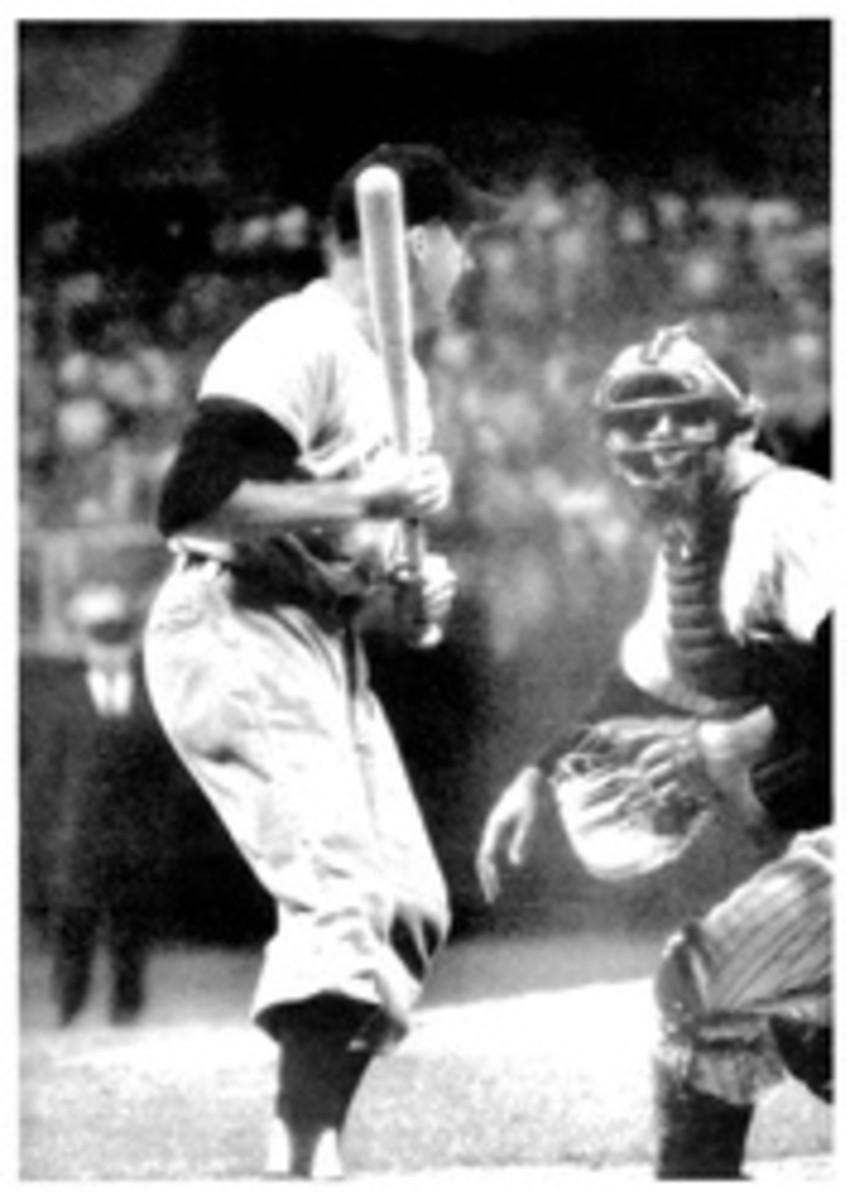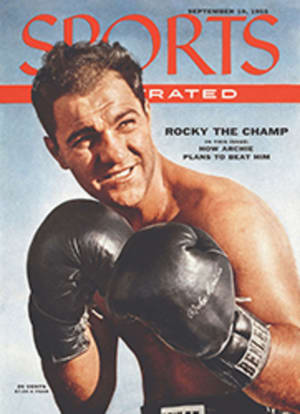
IN THE INAUGURAL EVENT AT THE GREAT NEW ROAD AMERICA COURSE IN WISCONSIN, HILL AND JOHNSTON STAGED A CLASSIC DRIVING DUEL
It was the final lap of the 148-mile feature race held on Road America—a brand-new black-top sports car race circuit weaving through the rolling hills of Wisconsin's kettle moraine country near Elkhart Lake which received its baptism of speed last weekend. Sherwood Johnston, driving Briggs Cunningham's blue-and-white D-type Jaguar with the dash of a D'Artagnan and the skill of a juggler, felt almost within grasp of what was surely to be the hardest won and most deserved victory in his racing career. Dogging Californian Phil Hill's wheel tracks from the drop of the flag, he had managed to squeeze by his rival on the 23rd lap and held a precarious two-second lead from that point onward. As Johnston drifted the tricky diminishing-radius curve known as Turn 12 and streaked through the wide S that led under the bridge at Station 13, he knew that Hill in George Tilp's Monza Ferrari was close behind him; but how close he had no means of telling, for the snout of the white Ferrari was no longer framed in his rearview mirror. Seven-tenths of a mile to go. One more downshift from third to second at the right-hand northeast corner (No. 14); a last upshift into third, zooming up the slope at the foot of the main straight—and Johnston would claim the checkered flag.
Then suddenly, as he cut the left bend under the bridge, the Ferrari nosed up level with him on his right, engine screaming, wheels grabbing crabwise at the outer radius of the road. Hill's red-shirted figure, eyes glued straight ahead, was tensed in a manner that spoke just one thing: "I'm going through." To this duel of speed—the greatest of its kind ever witnessed in postwar U.S. sports car racing—was added a split-instant clash of wills between the two drivers. Hill knew that it was now or never. If he let up a fraction, Johnston would ease outwards in a normal drift and shut the gate on him before Corner 14. Johnston knew equally well that if he held his speed nothing would stop the drift and the Ferrari would be forced off the road. Sensing this, the crowd of 50,000 leaped to its feet, yelling encouragement to both drivers. But in those dramatic 50 yards Hill had already committed the Ferrari to pass. Wisely and sportingly, Johnston took a shade of the weight off his throttle foot. Hill inched by with faultless judgment, on the ultimate shred of traction. He made it to Corner 14 by a scant length, revved through two lightning downshifts, skimmed past the turn's haybales and howled up the slope at 8,000 rpm to receive the checker 20 feet ahead of the Jaguar. A breathless SCCA official, wiping his brow, gulped: "I never want to live through another one like this. My hair's turning gray!"
SEARCH FOR THE GROOVE
From the outset, the Hill-Johnston duel overshadowed every other car and driver in the final event. For one hour 51 minutes 4 2/10 seconds this pair kept the crowd taut with a brilliant exhibition of polished, determined and cunning driving that gave the new Road America circuit a greater send-off than any of its originators ever hoped for. In the early stages both drivers handled their machines with restraint as they felt for the "groove" that would enable them to reach optimum speed.
On Saturday, when the opening three races were held, Hill told me: "This is the kind of course where on every lap you feel you could go a little faster at some point—but at the same time you wonder what would happen if you did." Neither the nervous, slender Hill who lives only for racing, nor phlegmatic Sherwood Johnston of the deceptively fast reflexes had much trouble finding that "groove." Hill led Johnston by seven seconds on the third lap and gradually widened the gap to 12 seconds on lap 17, but then an Allard went off the road and under the yellow flag Johnston wiped out 10 seconds of the deficit without breaking any rules, since he passed no one.
At this point the two leaders had lapped the entire field, including such name drivers as Bill Spear and Gordon Benett in identical Maseratis, Jim Kimberly's stroked 4.8 Ferrari, Ernie Erickson's D-type Jaguar and the Ferraris of Lunken, Hively, Barton and Lyeth.
Benett's Maserati ran third for nine laps, about one minute behind the leaders, until he was overtaken by Barton's Ferrari, Erickson's D Jaguar, Hively's Ferrari and Spear's Maserati, in that order. Barton dropped out soon after with transmission trouble while running one minute 32 seconds behind Johnston. Erickson then moved into third place, holding that position to the end in an impressive drive. Gordon Benett retook Hively and Spear (who made a pit stop) to finish fourth.
Meantime, Johnston took advantage of slower traffic to jump Hill and claim the lead on lap 23, when the fun began in earnest. Four laps later, Hill almost went off the road at Turn 5 in his eagerness to make up the paper-thin gap between the nose of his Ferrari and the tail of the Jaguar. The error cost him four seconds which he later made up. Hill's last lap of two minutes, 54 55/100 seconds set a record which will take some beating. He won this grueling event at an average of 80.20 mph on a course featuring six corners and eight curves per four-mile lap, with differences in altitude of over 275 feet, with diminishing-radius curves varying from 88 to 427 feet and with a maximum possible speed of 130 mph on the main straight. The enthusiasts who called Road America a "hairy" (rugged, tricky) circuit were not exaggerating, but as Hill enthusiastically remarked afterwards, "this is the finest course in the country."
DREAM INTO ACTUALITY
This is no more than a just tribute to a courageous band of racing enthusiasts who in the space of a few months translated an ambitious dream into actuality. It took 15 months—from January 20, 1954 to April 20 this year—to capitalize the venture through sale of stock. From then on, the bulldozing, grading, leveling and surfacing of four miles of black top, 27 feet wide, spread over hundreds of acres, occupied less than five months. Included in this work was the installation of 27,000 feet of snow fence; 65,000 feet of barbed wire; and 204 feet of gates to create 100 acres of parking space and safe vantage points for 200,000 spectators. Sparkplug of the venture was Clif Tufte, an Elkhart Lake sand and gravel dealer. In support Tufte had the financial and creative influence of such sportsmen as Jim Kimberly, SCCA 1954 national racing champion.
The true challenge of the course was demonstrated in Friday's practice when Chuck Hassan (Ferrari) and Tom Friedmann (Maserati) both left the road, lured by an excess of zeal on curves that were a lot sharper than they looked. Friedmann suffered serious burns and injuries. Saturday's races—the first of 30 minutes and the other two of 45 minutes each—went respectively to a potent green TC MG driven by Roy Heath, a sleek silver-gray Mercedes 300SL coupe carrying Paul O'Shea and a blue-and-white Osca handled by Frank Bott. O'Shea lost a commanding lead when his car went off the road at Corner 5 on the 11th lap, but he just scraped home to beat Bud Seaverns' Mercedes 300SL by a length. (For Road America class results, see SCOREBOARD.)
MAP
ROAD AMERICA is a four-mile black-top course which varies 275 feet in elevation. It is the first course in the U.S. that fully tests the fastest cars and the best drivers.
START
4,700 FEET
RISE
PITS
HIGHEST LEVEL
DOWNGRADE
S
SHARPEST TURN
UPHILL
HUMP
STEEP UPGRADE
DOWNHILL
DOWNHILL
LOWEST LEVEL

